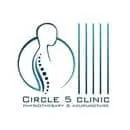Physiotherapy Treatment for Sciatica | Clinic in Cairo, Egypt
Sciatica refers to the pain that extends along the sciatic nerve, which branches from the bottom of your back extending to your hips, buttocks and down each leg. Sciatica usually affects only one side of your body. Sciatica treatment by physiotherapist is effective with acupuncture.
Sciatica is usually created when the disc or osteotomy in the spine or narrowing of the spine (narrowing of the spinal canal) presses on a part of the nerve. This causes inflammation, pain, and a feeling of tingling in the affected leg.
Although the pain associated with sciatica can be severe, most cases are treated with non-surgical treatments within a few weeks. People with severe sciatica associated with severe leg weakness or bowel or bladder changes may be candidates for surgery.
Symptoms of Sciatica:
- Pain that starts from the bottom of your spine and passes through your back and the back of your foot is the sure sign of sciatica. You may feel uncomfortable in any place covered by the nerve, the most common feeling is the pain coming from the bottom of your back and back to the back of your thigh and leg.Different types of pain may range from mild pain, sharp burning sensation or terrible pain. Sometimes it feels like a shock or an electric wave. It gets worse when you cough or sneeze, and sitting for long periods stimulates symptoms. Often only one side of your body is affected.
Some people may feel numbness, muscle weakness in the injured leg or foot. You may feel pain in a part of your leg while you feel numb in another part of it.
How to protection from sciatica:
It is not always possible to prevent sciatica, and the disease may recur. The following may play a key role in protecting your back:
Exercise regularly. To maintain the strength of your back, pay careful attention to the muscles of the body trunk, which are the muscles in the abdomen and lower back that are necessary to maintain proper posture and collusion. Ask your doctor to recommend you for certain activities.
Keep fit when sitting. Choose a seat with a good support for the lower back and armrests and a rotating base. See putting a pillow or towel wrapped in a small part of your back to keep the natural back curve. Maintain the level of knees and hips.
Use good body mechanics. If you stand for long periods, move forward one on a seat or a small box from one to the other. When lifting something heavy, use the underside to do the job. Move straight up and down. Keep your back straight and bend only at your knees. Hold your pregnancy close to your body. Avoid lifting and wrapping at one time. Find a partner to lift your body if it is heavy or hard to carry.


